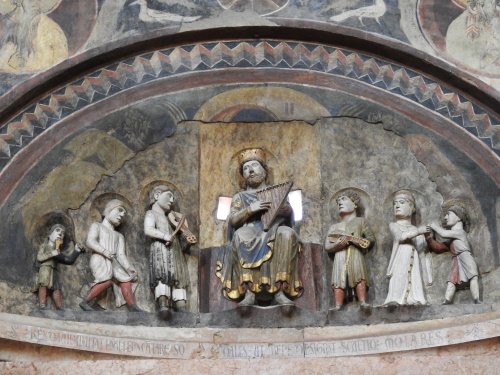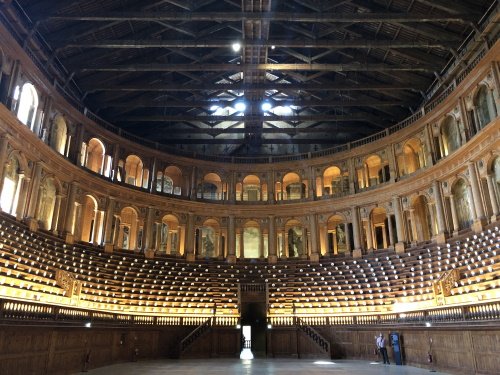Although I get the feeling that even Italy is reaching the limits of its WH potential,
its Tentative List
still holds 39 prospects. Among them are numerous examples of the typical medieval-Renaissance cityscape, such as Lucca, Pavia, and Bergamo. And
Parma
: a city with Etruscan origins, and self-rule as a Free Commune and Duchy for a long time afterward. Especially the rulers of the latter two periods have left their imprint on how the city still looks now.

I visited Parma on a day trip from Bologna. Frequent trains take just under an hour. My first impression was that of a pleasant, liveable city. Certainly compared to Bologna and its porticoes that block the daylight, Parma feels more spacious and inviting with green areas and many benches to sit on.
I started my explorations by crossing a bridge to
Oltretorrente
, the quarter at the “other” side of the river. Here is where the
Garden Palace of the Dukes of Parma
was built. It lies in a large French garden, with a lot of chestnut trees already turning to their autumn color.
Back in the town center, I made my way to the
Piazza Duomo
– the square with the
Cathedral
, the
Baptistery
, and other important buildings. It has superficial similarities with the
WH designated square in Modena
. The cities are only 60km apart, so it is not strange that they both used pink Verona marble to construct their most important buildings. Both cathedrals are also decorated with two marble lions at the entrance, the pair in Parma dates from the 13th century, while the Modena ones are
Ancient Roman spolia
. Another difference is that the Modena Cathedral kept its Romanesque murals, while the one in Parma has gone full Renaissance. It is spectacular however, the wall paintings that cover the full interior including the dome have a dramatic quality.

Entrance to the Cathedral is free, the Baptistery next door costs a steep 12 EUR. I doubted entering but decided that they probably are asking such a high fee for a reason. At least it deterred most of the tourists, so I could enjoy this octagonal structure at ease. The Baptistery is mostly known for its painted domed ceiling, with rays that connect with the arches. I did also enjoy the many small sculptures, of which some represent the months of the year.
And then I had even saved the best for last. At the pre-booked time slot of 13.30, I entered the
Palazzo della Pilotta
. The gigantic building was the headquarters of the Farnese family when they were the Dukes of Parma. It now holds the
National Gallery
– an exquisite Italian art collection from the ducal families. Among the highlights are an original work made by Leonardo da Vinci and
two sculptures of Giants
from Ancient Rome.

The best sight of all Parma however proved to be the
Farnese Theatre
, a huge wooden construction from the early 17th century. The theatre was built by one of the Farnese to show off to Cosimo de' Medici, who was supposed to visit. The duke wanted to marry off his eldest son to the de' Medici family. However, Cosimo canceled the trip and the theatre was only finished 10 years later. The antique-style theatre wasn’t used much in its time, as it is so large (it would fit a modern opera or musical theatre better).



